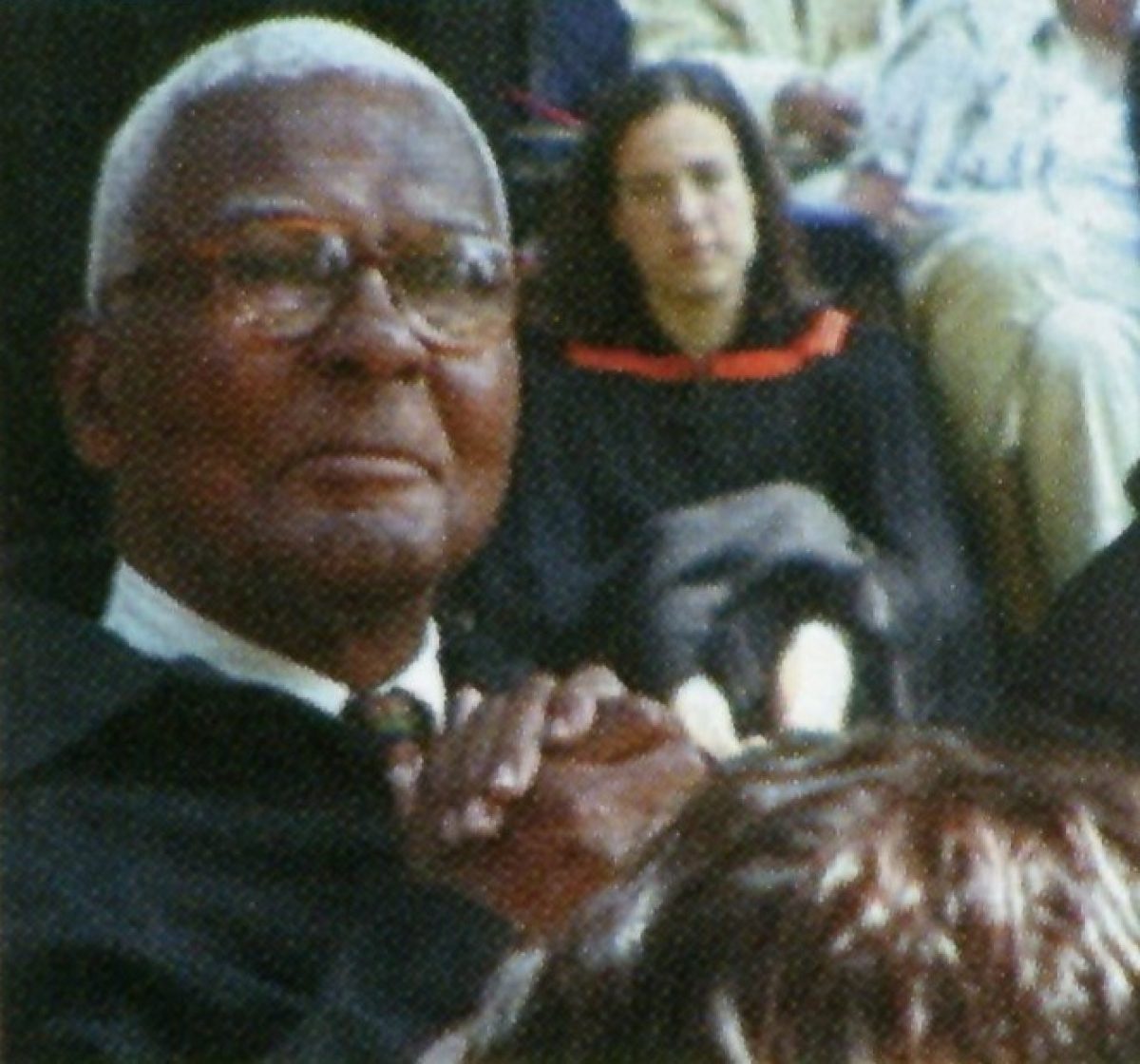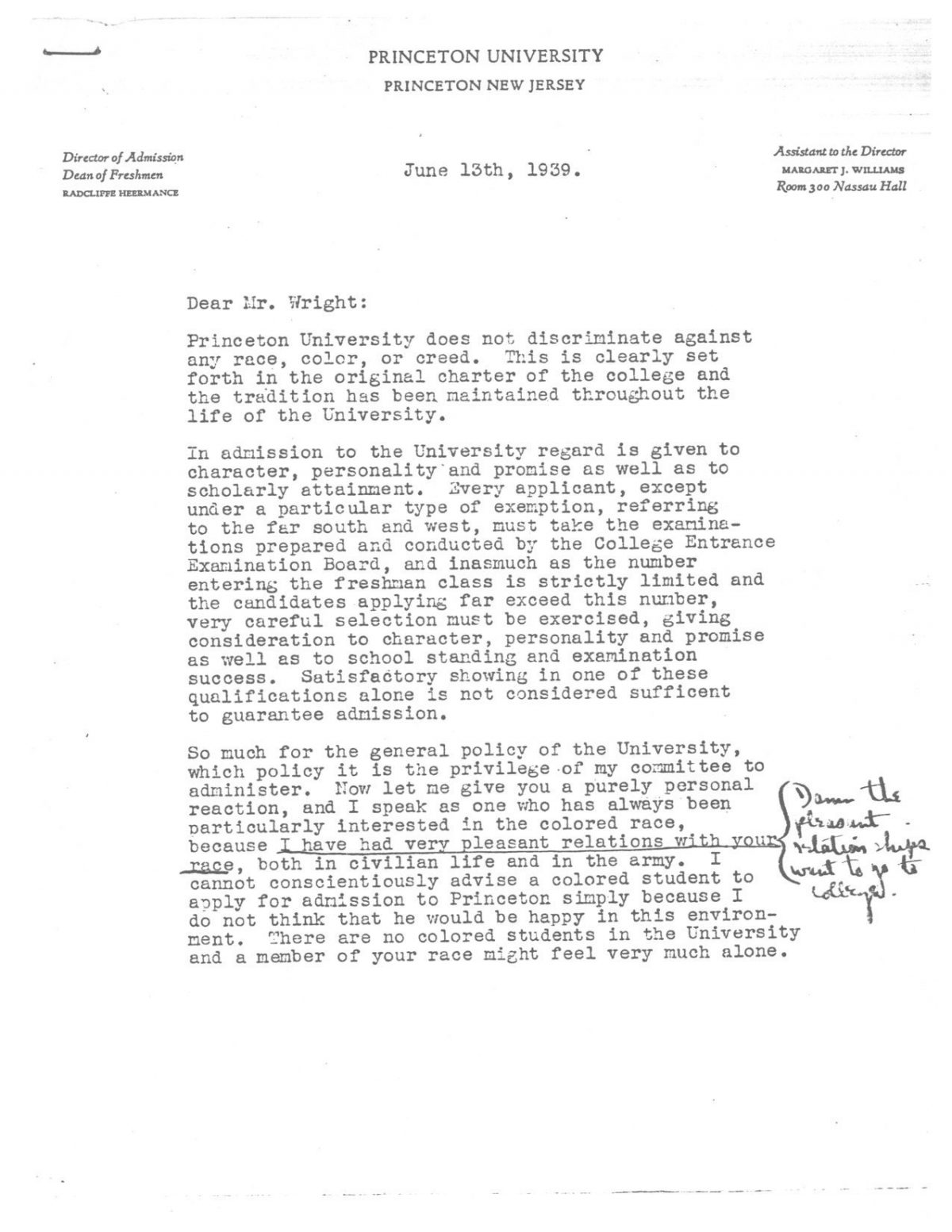[1]
Radcliffe Heermance as quoted by Bruce Wright in “Wonderful, Painful: 250th Video is Looking Back at Black Undergraduate Experience at Princeton,” Princeton Weekly Bulletin 86, No. 23 (7 April 1997): 1+.
⤴
[2]
Karen W. Arenson, “Princeton Honors Ex-Judge Once Turned Away for Race,” New York Times, 5 June 2001: B1.
⤴
[3]
Bruce Wright in Melvin McCray, Looking Back: Reflections of Black Princeton Alumni, VHS (1996: Media Genesis), Historical Audiovisual Collection, Princeton University Archives, Department of Rare Books and Special Collections, Princeton University Library.
⤴
[4]
Radcliffe Heermance to Bruce Wright, 13 June 1939, Box 73, Folder 6C, Historical Subject Files Collection, Princeton University Archives, Department of Rare Books and Special Collections, Princeton University Library.
⤴
[5]
Bruce Wright, note in margins of Radcliffe Heermance to Bruce Wright, 13 June 1939, Box 73, Folder 6C, Historical Subject Files Collection, Princeton University Archives, Department of Rare Books and Special Collections, Princeton University Library.
⤴
[6]
Joyce Wadler, “From a Published Judge to a Published Poet,” New York Times, 28 August 1998: B2.
⤴
[7]
“Pomp, Circumstance, and a Little Levity,” Princeton Weekly Bulletin 90, No. 30 (18 June 2001): 8.
⤴
[8]
Aims McGuiness and Joelle Godfrey quote several alumni letters in “Opening the Door to Blacks,” Daily Princetonian 28 February 1989: 4, including one from 1935. David V. Landsen, a member of the Princeton University Class of 1927, had written to the editor of the Princeton Alumni Weekly, “I cherish the hope that within the next forty years I will witness the M. Taylor Pyne Honor Prize, ‘usually considered the highest honor which an undergraduate can receive,’ being presented on Alumni Day to a Negro.” Idem, “A Negro at Princeton,” Princeton Alumni Weekly 35, No. 23 (29 March 1935): 533. Landsen’s estimate of the time it would take was about right; approximately 35 years later, Howard W. Bell became the first African American to win the M. Taylor Pyne Prize, sharing the honor in 1970 with Raymond J. Gibbons. See “Engineers Bell, Gibbons Split Annual Pyne Prize,” Daily Princetonian 28 February 1970: 1.
⤴
[9]
Kelly Lack, “Alumni Remember Journey to Integration,” Daily Princetonian 18 February 2008: 1.
The V-12 Navy College Training Program enrolled recruits in colleges and universities in the United States. They attended classes and received a basic education as they trained to become commissioned officers in the Navy during World War II.
⤴
[10]
“Howard, John L.,” Box 89, Undergraduate Academic Files, Princeton University Archives, Department of Rare Books and Special Collections, Princeton University Library.
⤴
[11]
“This is Princeton,” Town Topics, 10 October 1963: 1.
⤴
[12]
Princeton University, Profile 2016-17 (Princeton, NJ: Princeton University, 2016).
⤴






